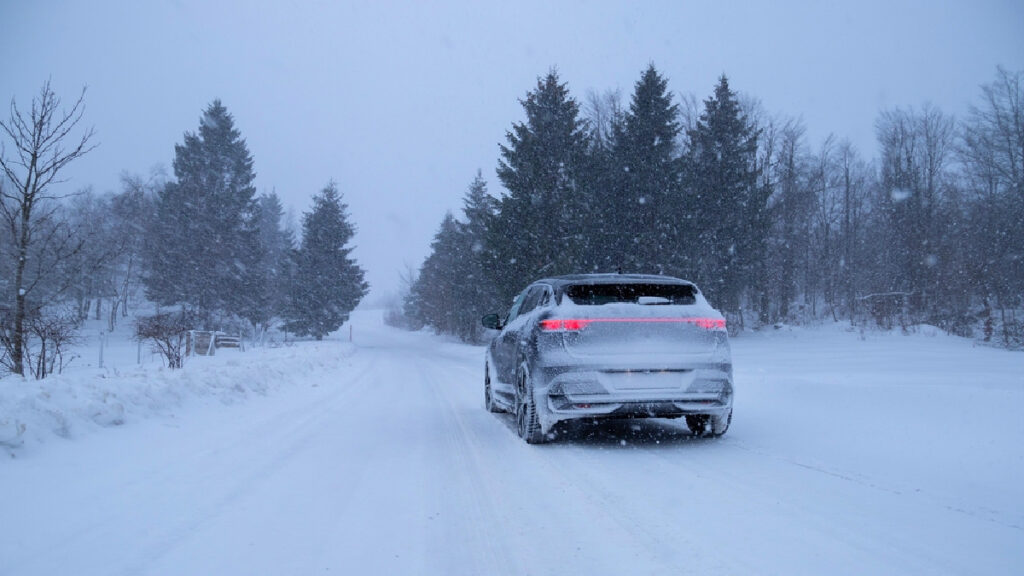Last Updated on January 6, 2025 by Kristin

Driving in winter weather requires every driver to be cautious. But there are a few special considerations for electric vehicles (EVs) when the mercury plunges and the snow falls. As more rental car companies electrify their fleets, many renters this winter will find themselves driving an EV for the first time.
You’re already likely familiar with basic safety precautions like defrosting the windshield and removing ice and snow from the car’s exterior. However, EV drivers also need to understand how the weather can impact the car’s performance and battery life. Here are the most important things to know when driving an EV in the winter.
The Driving Range Can Shrink
EVs are powered by batteries instead of gasoline. When temperatures fall below freezing, the chemical reactions that generate electricity can slow, reducing the battery’s output.
A recent Consumer Reports study revealed that freezing temperatures can shave at least 25% off the car’s driving range. And while cold weather can also limit the range of gas-powered vehicles, the U.S. Department of Energy (DOE) found that an EV’s driving range can drop by more than 40% on a trip in more extreme cold weather.
The Battery Charge Should Stay Above 20%
It’s never a good idea to let an EV’s battery drain below 20% in any type of weather, as driving an EV with an extremely low charge can harm the car’s components.
However, it is especially important to watch the car’s battery charge levels in the winter. This is not just because cold weather can drain it more quickly. It is because the vehicle might need this power to warm up the battery enough, Wired notes. Both Wired and car manufacturer Tesla suggest not letting this battery charge dip below 20%.
Warming Up The Car Should Happen While Charging
Electric cars should be warmed up before driving in cold conditions to ensure maximum range. However, there’s a key detail to remember — the car should be plugged in and not just idling in a parking lot. Once the car is warmed up, the DOE suggests not letting it idle for too long.
The DOE also suggests a few tips for maximizing EV battery life and range in the winter. For example, two things that can help maximize range are parking inside a heated garage and using the seat warmers instead of the car’s air heater.
The Car Self-Monitors Temperature and Battery Health
Many electric vehicles are outfitted with the latest technology to help monitor performance, range and battery life. Use these tools to your advantage in the winter to keep tabs on how the vehicle is handling cold weather.
For example, Tesla’s app has a remote feature to defrost the vehicle, and features a snowflake icon that notifies drivers when the battery is too cold for the car to perform properly. Teslas also feature a “scheduled departure” feature that allows you to plug in your destination in advance of hitting the road so that the vehicle can properly charge.
There are Many Ways to Find Charging Stations
While more EV charging stations are popping up around the world by the day, driving an EV still requires having a good idea of where nearby charging stations are located during your trip. Considering that the battery can drain rapidly in cold weather, knowing where charging stations are located is even more important in the winter.
Luckily, various apps can help you find charging stations nearby and plan your trips accordingly. Along with the Tesla app showing Supercharger stations, helpful apps include PlugShare, ChargeHub, EVgo and Electrify America.
One of the easiest ways to keep your EV rental charged during your trip is to stay at a hotel that offers EV charging overnight.
Related:




